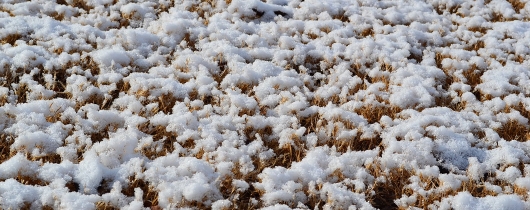Manna From Heaven | Maná Caído del Cielo

Ss. Joachim and Anne
Exodus 16:1-5, 9-15; Matthew 13:1-9
“What is this?”
That was the Israelites’ initial response when they first saw the food from heaven that God gave them in response to their hunger, anxiety, and frustrations during their sojourn in the desert. The Hebrew expression, Ma’n Hu has since been translated into the English manna. It is real food found in that part of the world and comes from a variety of sources, including the sap of the Tamarisk tree. It is still used in cooking today.
God gave his people manna and quail to sustain them, but there was a condition: With the exception of the day before the Sabbath, they should gather each day only what they needed for that day. They needed to trust that God would give them the rest. We echo that call to faith in the Lord’s Prayer when we pray, “Give us this day our daily bread.”
What little we know about Ss. Joachim and Anne, the parents of the Blessed Virgin Mary, has been handed to us through early Christian legends. According to tradition, they were good and pious Jewish parents who raised a daughter well-disposed to receiving the unique call that God gave her. They had the faith God challenged their ancestors to develop.
On the continuum of faith, most of us are somewhere between the grumbling skepticism and inconstancy of those who followed Moses and the solid and quiet commitment of Mary’s parents. Much depends on the quality of the spiritual soil that Jesus invites us to consider in our familiar gospel parable. The healthier we make that soil, the more ready we will be to receive the seed and give thanks for the nourishment that God gives us daily. - jc
--------------------------------------------------------------------------------------------------------------------
Ss. Joaquín y Ana
Éxodo 16,1-5.9-15; Mateo 13,1-9
"¿Qué es esto?"
Esa fue la respuesta inicial de los israelitas cuando vieron por primera vez la comida del cielo que Dios les dio en respuesta a su hambre, ansiedad y frustraciones durante su estancia en el desierto. La expresión hebrea Ma'n Hu se ha traducido desde entonces al español maná. Es un alimento real que se encuentra en esa parte del mundo y proviene de una variedad de fuentes, incluyendo la savia del árbol Tamarisco. Todavía hoy se utiliza en la cocina.
Dios dio a su pueblo maná y codornices para su sustento, pero había una condición: A excepción del día anterior al Sabbath, debían recoger cada día sólo lo que necesitaran para ese día. Debían confiar en que Dios les daría el resto. Nos hacemos eco de esa llamada a la fe en el Padrenuestro cuando rezamos: "Danos hoy nuestro pan de cada día".
Lo poco que sabemos de los Ss. Joaquín y Ana, padres de la Virgen María, nos ha llegado a través de las primeras leyendas cristianas. Según la tradición, fueron unos padres judíos buenos y piadosos que criaron a una hija bien dispuesta a recibir la llamada única que Dios le hizo. Tenían la fe que Dios desafió a sus antepasados a desarrollar.
En el continuo de la fe, la mayoría de nosotros nos encontramos en algún lugar entre el escepticismo refunfuñón y la inconstancia de los que siguieron a Moisés y el compromiso sólido y tranquilo de los padres de María. Mucho depende de la calidad de la tierra espiritual que Jesús nos invita a considerar en nuestra conocida parábola evangélica. Cuanto más sana sea esa tierra, más preparados estaremos para recibir la semilla y dar gracias por el alimento que Dios nos da cada día. - jc
Translation assistance provided by DeepL.com®
Asistencia de traducción proporcionada por DeepL.com®




